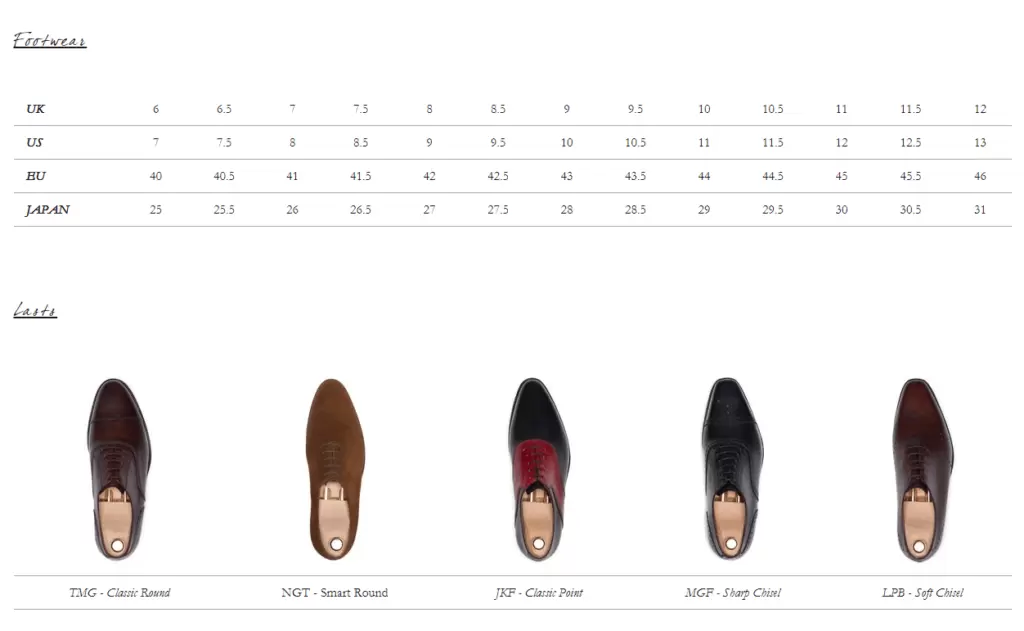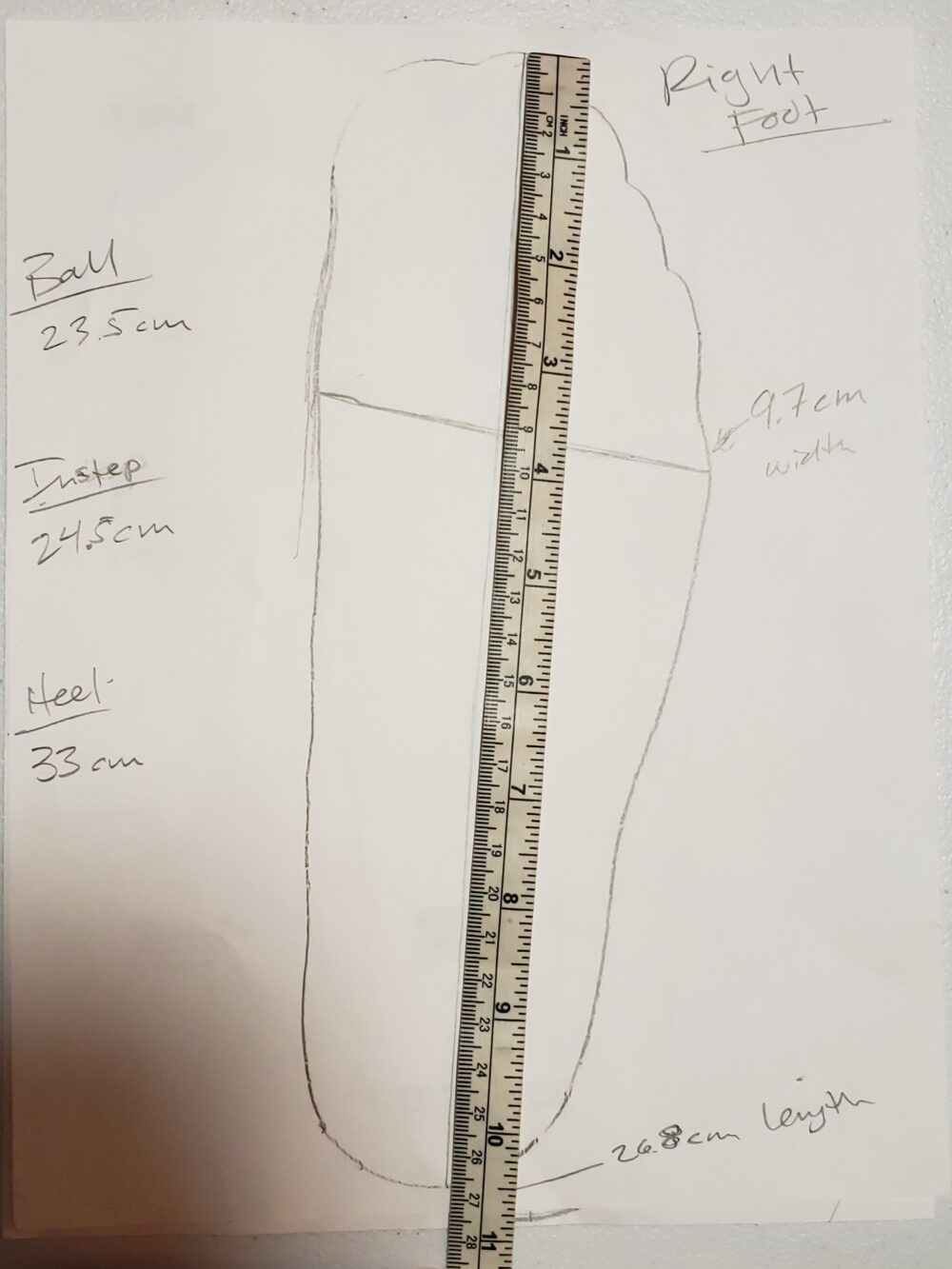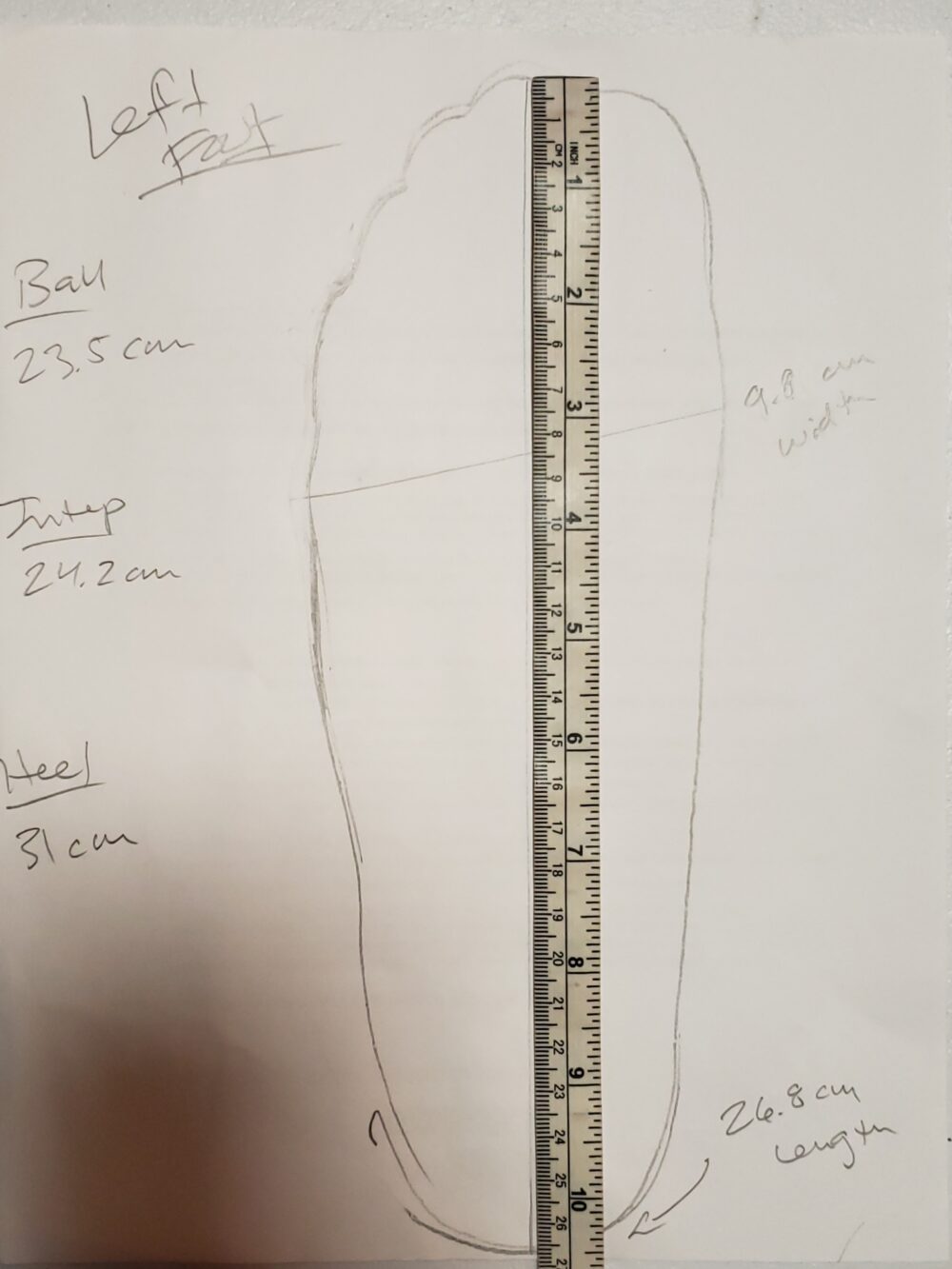

The Myth of the Universal Shoe Size Guide
Let’s get this straight: there is no such thing as a universal shoe size guide.
There’s no shoe size that fits all brands, all lasts, or all feet. Yet, many consumers cling to a single number like it’s gospel — “I’m a UK10, always have been.” If that’s you, chances are you’re more loyal to the number than the actual fit of your shoes.
Shoe sizing is not standardized. And treating it like it is? That’s a quick way to end up with shoes that pinch, flop, or never quite feel right.
Why Shoe Sizes Vary (Even Within the Same Brand)
Shoe size isn’t an exact science — it’s an interpretation. Brand by brand. Last by last.
Take this example:
There are two common schools of thought when converting UK to US shoe sizes:
Which one is correct?
Both. And neither. It depends entirely on the brand’s internal sizing logic.
Examples:
- Gaziano & Girling: If you’re a US9, you’ll likely need a UK8.5.
- Crockett & Jones: For a US9, a UK8 usually works.
- Carmina: US9 in the Simpson last = UK8.5. In the Rain last = UK8.
Even within a brand, sizing can change depending on the last used. This is why shoe size charts alone are unreliable. The best advice? Email the company before buying.




Shoe Lasts Are Subjective — Here’s Proof
When I had my personal last made in Spain, I requested a UK8 in E width. What I received felt more like a G width. Why? Because their version of “E width” wasn’t aligned with mine. Again: interpretation, not standardization.
This is common in the footwear industry — and the reason blind trust in size charts often leads to returns, exchanges, and frustration.
You also have to consider global foot anatomy differences. Brands often build lasts that reflect regional norms.
Here’s a broad-stroke view:
- Americans: Narrow, shallow feet
- Europeans: Higher insteps
- Africans: Long, flat feet with girth
- Asians: Shorter feet, wide forefoot, narrow heel, flat arches
- Latinos: Broad feet, high insteps, shorter overall length
No single size guide can account for all of these variations. So again, treat size charts as guidelines, not gospel.


How to Shop Smart for Proper Fit
If you’re spending hundreds (or thousands) on quality shoes, don’t just pick a size based on a chart. Here’s what to do instead:
- Contact the brand directly
Ask for sizing advice based on your known fit in other brands. - Know your foot measurements
Length, width, and instep height all matter. - Understand the last
Know which last the shoe is built on and how it compares to others. - Request insole measurements, if possible
They can be more telling than size labels. But they are also not an exact science either. Our feet splayed out will be larger than the insole in a properly fitting shoe. Trying to get your measurements inside the insole measurement will make for a loose-fitting shoe. - Research what other people wear in that brand
If you can know what a customer wears in the brand in question in comparison to another brand that you are familiar with, you can then get a good estimate of what you might be in the unknown brand.
Final Thought: Size Charts Aren’t the Enemy, But…
A shoe size guide can be helpful — as a starting point, not a final answer. The real key is to stay flexible, stay curious, and never assume that one number fits all.
Because if you don’t do your homework and the shoes don’t fit?
You only have yourself to blame.
—Justin FitzPatrick, The Shoe Snob
Shop · Marketplace · J.FitzPatrick Footwear · Patreon









